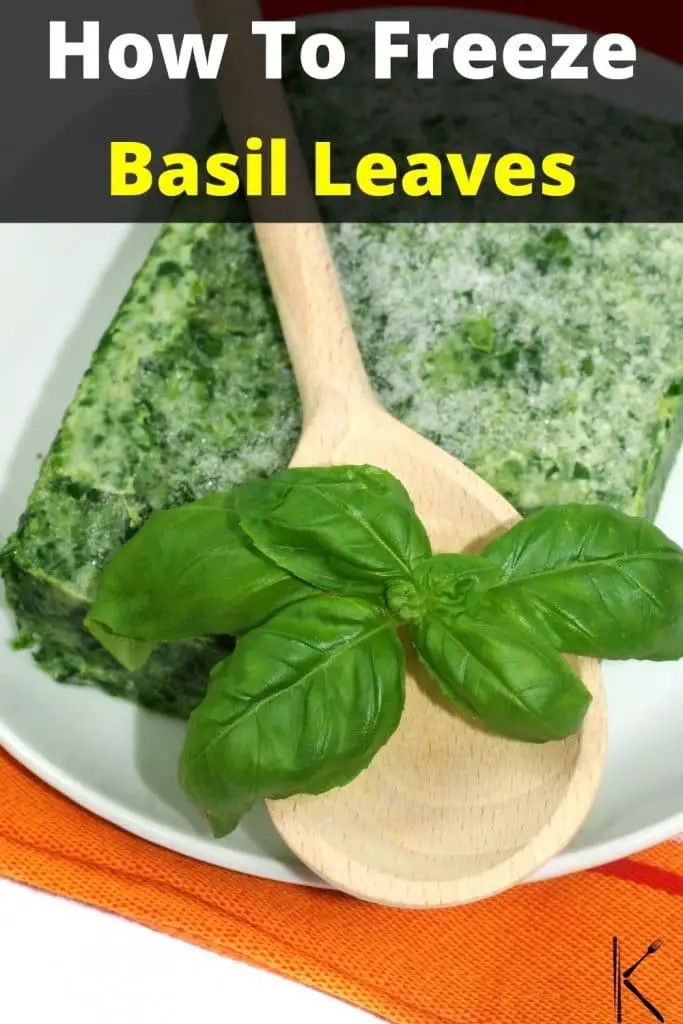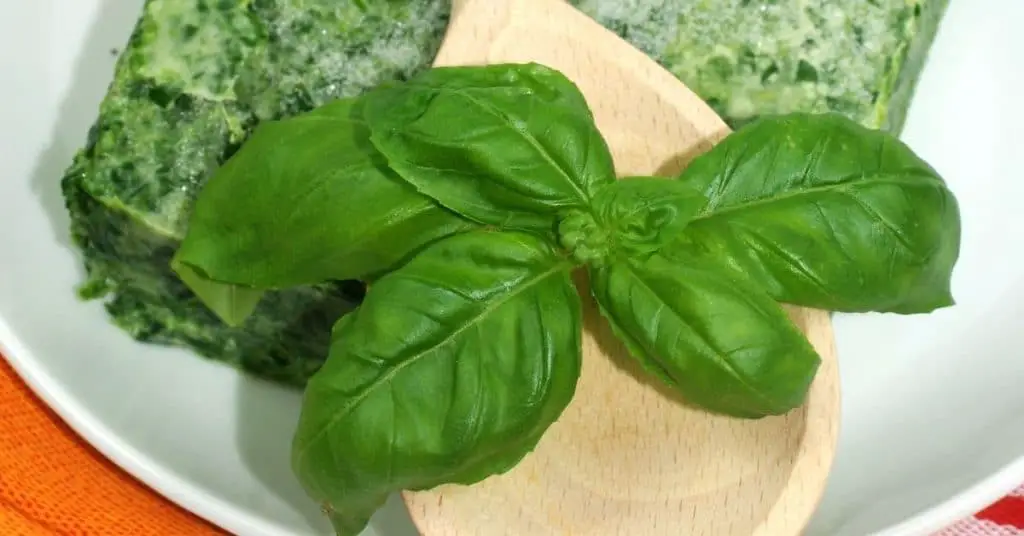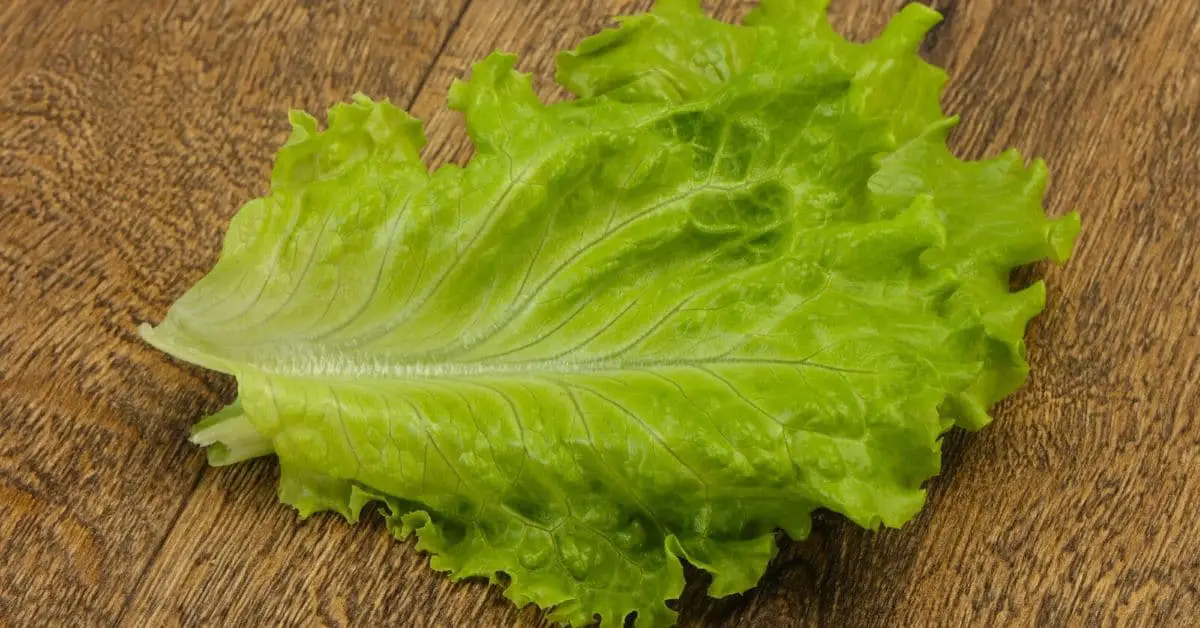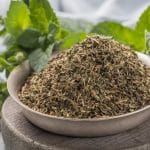In a nutshell, yes, you can freeze fresh basil leaves with olive oil, but they will become limp and suitable only for cooked dishes.
Basil is a fragrant herb used mostly in savory dishes. It is used raw or cooked in a green salad, pasta, pizza, sauces, chicken dishes, and fruit salad.
If you have more basil on hand than you can use, don’t let this delicious herb go to waste. Preserve basil by freezing it before it starts wilting or losing its bright green color.
Here is a full guide to freezing basil for best quality preservation.
Can Basil Be Frozen?
Yes, fresh basil leaves can be frozen to extend their shelf life and preserve the herbaceous flavor.
Fresh basil leaves will lose their vibrant texture on freezing and become limp once thawed. For this reason, frozen basil is best used in cooked dishes such as stew, soup, sauces, baked crumbed toppings, and pesto.
Preserve fresh basil with olive oil before freezing. This helps to maintain the bright color of the leaves, preventing them from turning dark green or black when frozen.
How To Freeze Basil Leaves
Basil can be frozen as whole leaves, chopped, or as pesto.
Regardless of the method you choose to freeze the basil leaves, clean it as follows:
Choose fresh basil with bright firm leaves. Remove any leaves that are yellowed or wilted. Once you have picked the healthy basil leaves off the stems, rinse the basil well in a bowl of cold water to remove any dirt, chemicals, or bugs.
Lightly shake the water off and pat the basil dry with a clean kitchen or paper towel. Now choose the desired freezing method for the basil from the below options.
Method 1: Whole Leaves
Step 1: Blanch (Optional)
Blanching basil is optional. You can do this by placing the basil in a sieve and dipping it into a pot of boiling water for 10 seconds. Immediately plunge the basil in ice water to stop the cooking process.
Basil is fragile, so make sure not to blanch it for longer than 10 seconds. Have the bowl of ice water ready before blanching so that you can transfer it directly without risking further cooking.
Once cool, remove the basil from the ice water and place it on a clean dish towel or paper towels. Gently pat the blanched leaves dry. Blanching preserves the vibrant green color, especially if you are freezing the basil for a few months.
Step 2: Flash Freeze
To prevent the leaves from sticking together in a clump when frozen, spread them out on a lined baking sheet in a single layer. Place the baking sheet in the freezer just until the leaves are
frozen.
Step 3: Pack and Seal
Once frozen, remove the tray from the freezer and carefully pack the basil into resealable freezer bags or an airtight container.
Work quickly so there is no time for the leaves to start thawing. Lie the bag flat, lightly press down to remove all the air, and seal.
Step 4: Label and Freeze
Label the bag or container with the contents and date to keep track of how long it has been frozen. Place it in the freezer.
Method 2: Ice Cube Trays
Step 1: Chop
After cleaning the basil and drying it thoroughly, chop the leaves into smaller pieces using a blender or food processor. You can keep the leaves roughly chopped or continue to blend until it turns to a chunky paste depending on your preference.
Step 2: Oil
Coating the leaves in olive oil will preserve the color and prevent the leaves from turning black. This step is, however, optional. Add a little olive oil to the blender while you are chopping the leaves.
Alternatively, remove the roughly chopped leaves from the blender and drizzle with olive oil afterward, mixing it throughout the batch.
Step 3: Portion and Freeze
Portion the chopped leaves or paste into an ice cube tray. Do not fill the compartments to the brim. If you have opted not to add olive oil to your chopped basil, top each compartment with just a little water. Place the ice tray in the freezer.
Step 4: Pack
Once the basil ice cubes are frozen solid, remove them from the ice cube tray and pack them into a releasable freezer bag.
Step 5: Seal, Label, and Freeze
Press out any remaining air as you seal the freezer bag. Label the resealable bag with the contents and date to keep track of how long it has been stored. Freeze.
How To Thaw Frozen Basil
Frozen basil or basil cubes can be added straight from the freezer to the dish you are cooking on the stovetop without thawing.
If you are using basil cubes to make a salad dressing, place the cubes in the mixing bowl to defrost for 20 to 30 minutes, then add the other ingredients to mix your dressing.
You can also make pesto by blending the defrosted basil in a food processor with parmesan cheese, garlic, and nuts as per your recipe. This is great for adding fresh flavor to pasta dishes.
Types of Basil
Basil plants are a leafy green herb with a strong aromatic flavor and sweet smell. Basil is mostly used fresh or added to recipes at the last minute since long periods of cooking dulls its flavor.
Basil can be dried or frozen for long-term use. Freezing fresh basil will, however, preserve the flavor better than drying it.
Sweet basil is the most commonly used variety of basil. There are, however, many other types including Thai basil, lemon basil, and holy basil.
Basil is used in cuisines worldwide and is especially popular in Italian dishes. It is one of the main ingredients in pesto and also in marinara sauce.
FAQs
Conclusion
When freezing basil, make sure to keep it stored in an airtight environment. Whole basil leaves without olive oil should be well dried before packing them in the freezer. Any additional moisture from washing the basil will turn into ice crystals and denature the delicate herb plant cells.
Coating basil with olive oil is the best way to preserve its vibrant color and prevent it from turning black. If you forgot to add oil on freezing, don’t worry, your basil will still taste great once added to your recipe, regardless of the dark color.
Basil makes for delicious salad dressings and sauces with pasta, omelets, pizza, salad, chicken, and fish. Putting in a little effort to preserve your fresh herbs in the freezer will go a long way when adding flavor to your recipes later.
Up next: How to Dry Basil

*image by PantherMediaSeller/depositphotos









